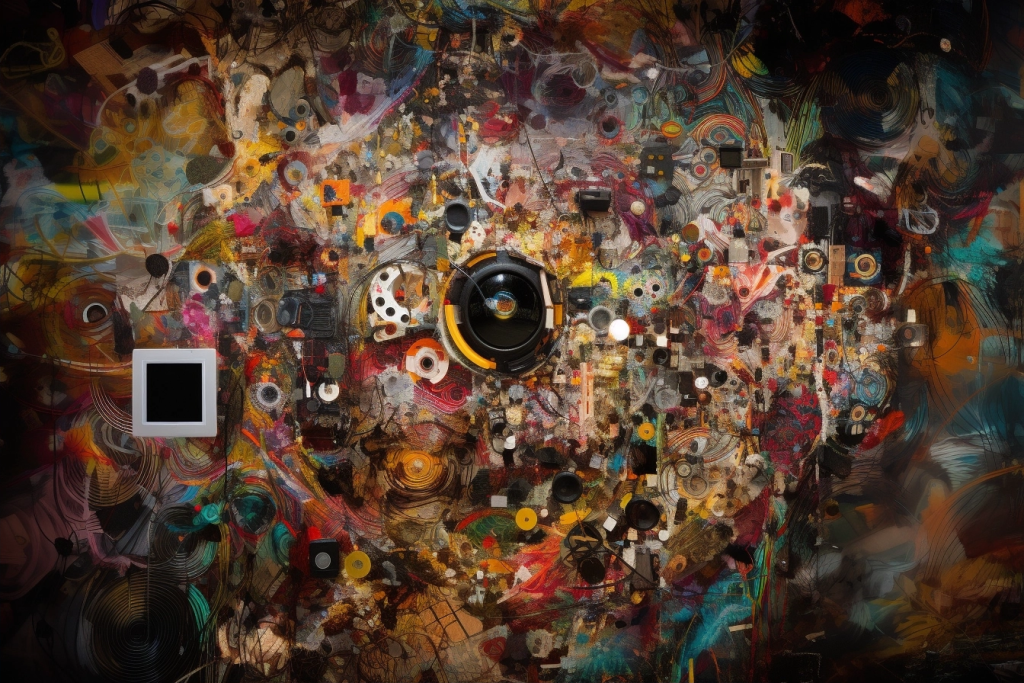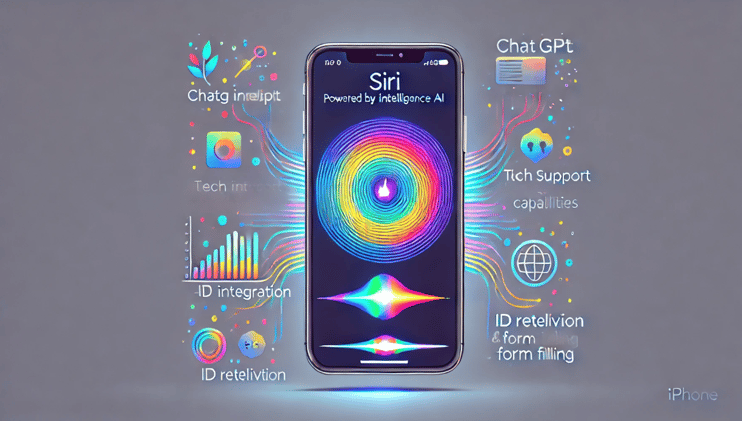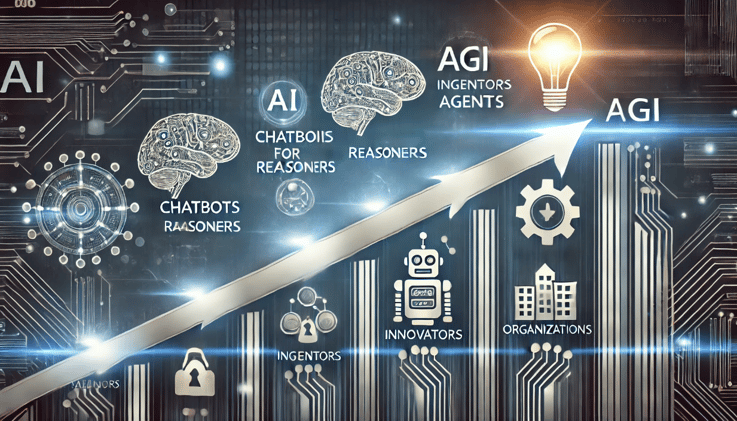# The AI-Driven Revolution in Modern Art: A Groundbreaking Sale at Auction
## The Unprecedented Auction of 'Portrait of Edmond de Belamy (2018)'
### The Artistic Vision Behind the AI Creation
The creation of *'Portrait of Edmond de Belamy (2018)'* was a testament to the fusion between human creativity and artificial intelligence. This masterpiece, generated by an advanced generative AI algorithm, was meticulously crafted through a complex process that emulated the artistic sensibilities of renowned artists across history.
The AI system underwent a comprehensive analysis of thousands of historical masterpieces, meticulously cataloging the essential elements and stylistic nuances that define artistic expression. By synthesizing this wealth of information, the AI algorithm created a unique amalgamation of form, color, and texture that captured the essence of human creativity through an unprecedented lens.
### The Striking Aesthetic of the AI-Generated masterpiece
The final product of this digital artistry is a visage that defies conventional artistic norms yet radiates with a profound sense of humanity. The portrait exhibits a level of detail and nuance that has never been achievable through traditional mediums alone. Its intricate brushstrokes, carefully calculated proportions, and evocative expressions stand as a testament to the AI's ability to replicate the complexity of human artistry.
The use of cutting-edge technology in its creation has not only elevated the artistic form but also opened new avenues for exploration and innovation in the visual arts. The result is a work that bridges the gap between the tangible and the intangible, defying expectations while maintaining an indelible connection to human experience.
### The Market Reaction: A New Era for Art Investment
The sale of *'Portrait of Edmond de Belamy (2018)'* at the recent auction has sent shockwaves through the art world. With a staggering final bid of $432,500, this piece has solidified its place as one of the most significant art sales in recent history.
The success of this sale underscores the rapidly evolving landscape of contemporary art and its increasing reliance on technology. As the art market continues to diversify, the role of AI-generated art is emerging as a game-changer, challenging traditional notions of creativity and investment.
### The Ethical Considerations: Balancing Human Creativity with Machine Precision
While the sale of *'Portrait of Edmond de Belamy (2018)'* has garnered widespread acclaim, it has also sparked thoughtful debate about the ethical implications of AI-generated art. Critics argue that while these works may challenge the boundaries of artistic expression, they risk diluting the essence of human creativity and emotional resonance.
This discussion highlights the need for a balanced approach to integrating technology into the artistic process. While AI offers unprecedented opportunities for innovation, it must be employed as a complementary tool rather than a replacement for human talent.
### The Ascension of AI Art: A New Creative Frontier
The rise of AI-generated art heralds a new era in contemporary culture. This intersection of technology and creativity is not merely an advancement in artistic techniques; it represents a fundamental shift in how we engage with and interpret art.
The expansion of the AI art market has opened up new avenues for artists, Curators, and collectors alike. As these works continue to evolve, they promise to challenge traditional notions of authorship while providing a platform for innovation and collaboration between human and machine.
### The Future Implications: Rewriting Artistic Boundaries
The ability of AI to generate art with such precision raises profound questions about the future of artistic creation. Will this technology soon render traditional artists obsolete, or will it serve as a catalyst for new forms of artistic expression?
One thing is certain: the fusion of human ingenuity and artificial intelligence promises to unlock untapped potential in the world of art. By embracing this innovative frontier, we can look forward to a future where creativity is no longer confined by physical limitations but instead extended through the power of technology.
### The Role of Collectors and Investors
In light of these developments, the role of collectors and investors in the art market has never been more critical. As AI-generated art continues to grow in popularity, it is essential for stakeholders to remain informed about its potential impact on the value of their investments.
The rising profile of AI art has also created new opportunities for collaboration between artists and technologists. These partnerships not only enhance the creative process but also pave the way for groundbreaking artistic projects that redefined the boundaries of contemporary culture.
### The Broader Cultural Impact: Shaping Perception and Expectations
The recent auction of *'Portrait of Edmond de Belamy (2018)'* has had a ripple effect beyond the art world, influencing broader cultural perceptions and expectations. This event serves as a reminder that technology is not merely a tool for enhancing human creativity but also a force that can shape the way we live, think, and experience art.
The widespread appreciation for this piece speaks volumes about the growing acceptance of AI-generated art as a legitimate form of artistic expression. As these works continue to circulate within the market, they are likely to set new standards for innovation in contemporary culture.
### The Need for Ethical Guidelines: Navigating the Intersection of Art and Technology
As we move forward into this new era, it is imperative that ethical guidelines be established to guide the responsible use of technology in artistic creation. While AI offers immense potential, it must be wielded with care to ensure that its development does not compromise the essence of human creativity.
The establishment of such guidelines will not only promote accountability but also foster a culture of innovation that respects the principles of humanity and creativity. By setting clear boundaries, we can ensure that this technological revolution serves as a force for good in the world.
### The Road Ahead: A Continuing Evolution of Artistic Expression
Looking ahead, it is clear that AI-generated art will continue to evolve, offering new possibilities for artistic expression and innovation. As technology advances, so too will our ability to push the boundaries of creativity.
The future of art lies not only in the hands of human artists but also in the hands of those who work with technology to unlock new forms of artistic expression. By embracing this ongoing evolution, we can ensure that art remains a powerful force for inspiration and cultural transformation.
### The Final Word: Embracing the New Normal
In conclusion, the recent sale of *'Portrait of Edmond de Belamy (2018)'* is a landmark moment in contemporary culture, highlighting the transformative potential of AI-generated art. As we continue to explore this innovative frontier, it is important to remain mindful of its ethical implications and to approach its development with a sense of responsibility.
In the end, it is clear that the fusion of human creativity and artificial intelligence holds immense promise for shaping the future of art. By embracing this new normal, we can look forward to an even brighter and more vibrant cultural landscape.
</think>
The recent sale of *'Portrait of Edmond de Belamy (2018)'* at a high-profile auction has sent shockwaves through the art world, showcasing the transformative potential of AI-generated art. This masterpiece, created by an advanced generative AI algorithm, is a testament to the fusion between human creativity and cutting-edge technology.
Through meticulous analysis of thousands of historical masterpieces, the AI synthesized elements of artistic expression that resulted in a unique and evocative portrait. Its intricate details and nuanced expressions have not only elevated its aesthetic value but also opened new avenues for innovation in contemporary art.
The success of this sale underscores the rapidly evolving landscape of contemporary art and its increasing reliance on technology. While the piece has garnered widespread acclaim, it has also sparked thoughtful debate about the ethical implications of AI-generated art.
As we move forward into this new era, it is imperative that ethical guidelines be established to guide the responsible use of technology in artistic creation. By balancing innovation with care, we can ensure that this technological revolution serves as a force for good in the world.
In conclusion, the fusion of human creativity and artificial intelligence holds immense promise for shaping the future of art. By embracing this new normal, we can look forward to an even brighter and more vibrant cultural landscape.




